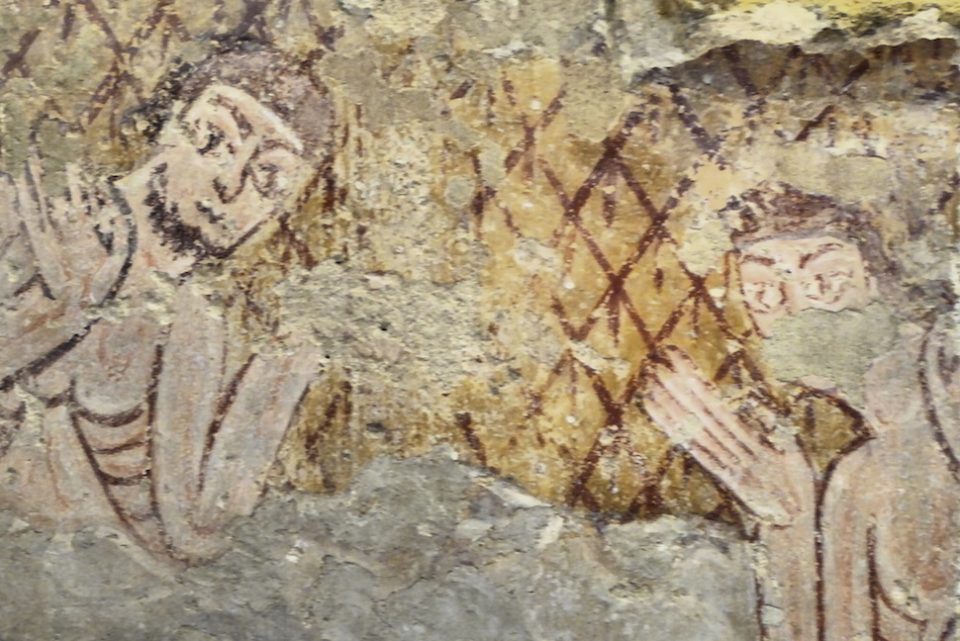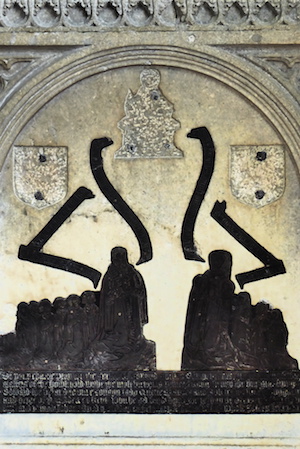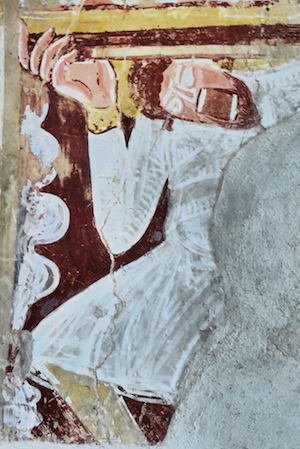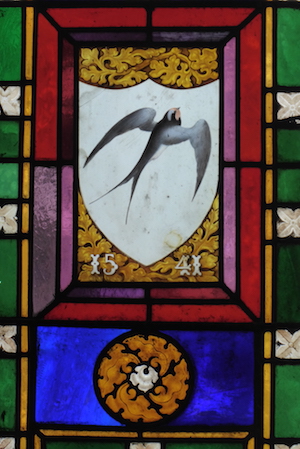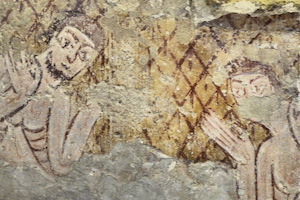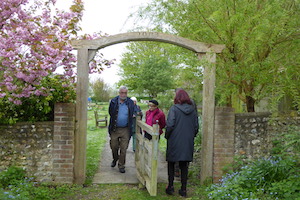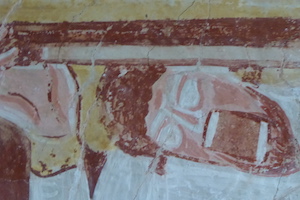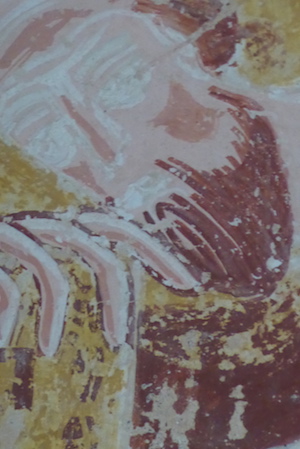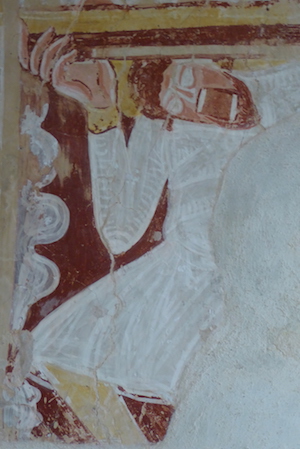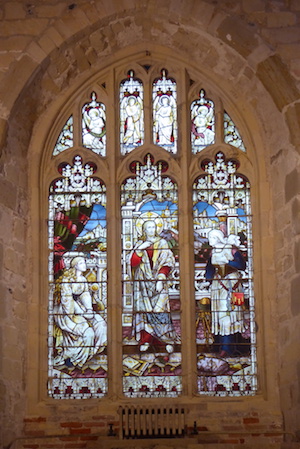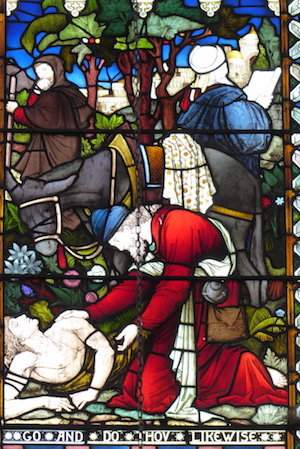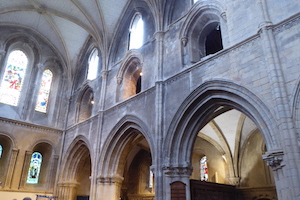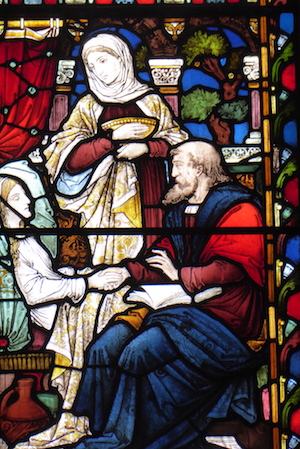Kate Ormond reflects on an interesting day out led by David Robson with occasional delights 'off-piste'.
You may have heard Nicola Westbury’s interesting lecture about her conservation work as architect to the Churches Conservation Trust on St Botolph’s in Steyning and Holy Sepulchre in Warminghurst. To accompany the lecture RS members and friends joined a study day to visit these and other ancient West Sussex churches, many created for communities dependent on the navigability of the River Adur. As the river silted up and livelihoods were lost, people moved on, congregations dwindled, and Downland churches fell into disrepair.
While not quite Downland, we began at St Mary de Haura in Shoreham, a Grade 1 listed building of 11th century Norman origin built for a once thriving city whose history has been determined by river and sea. It is unusual among English parish churches in having a stone vault soaring above the three tiers of arcade that transition from Norman to Gothic and supported by flying buttresses. Perhaps more unusual are the columns of the arcade that are different on each side – those to the north alternately round and octagonal, to the south more complex and uniform.
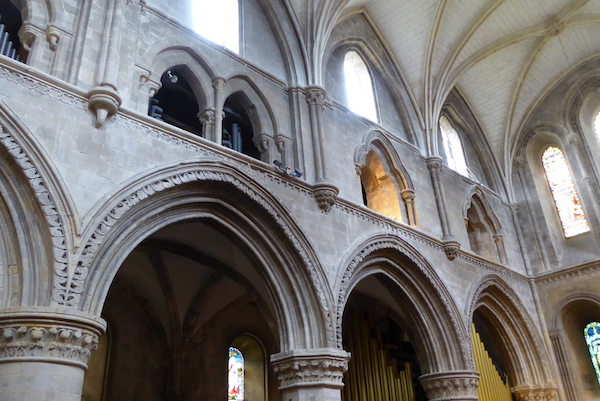
As the day was led by David Robson it was not surprising to find ourselves off-piste for a few extra delights. The first was to view the grave of Amon Henry Wilds in the cemetery of St Nicholas’s church in Shoreham. Iron railings surround the tombstone now nestled beneath a spreading laurel tree and looking comfortably shabby chic.
The four Downland churches we visited had in common their Saxon or Norman origins, picturesque settings (often just a chancel and nave with limited changes dependent on population variation) and varying degrees of restored wall paintings. Yet each has its own character, best experienced by being there to sense the calm rural simplicity which evokes a sense of early Christianity.
Coombes Church, named for its siting as its dedication is unknown, contains wall paintings re-discovered in 1949 depicting the gospel through pictures for those who couldn’t read. Having served its community for a thousand years it continues to be used and maintained by a small hard-working congregation.
St Botolph’s in Steyning is a Saxon church recently restored by the CCT. The Adur runs along the east of the site. Its silting up in the 14th century brought down the only bridge across the river that had been used for what is thought to be a thousand years, leading to the demise of the village.
We were treated to a personal tour by Nicola of the restoration of the Church of the Holy Sepulchre in Warminghurst. It was thrilling to hear and see for ourselves the nature and extent of the work undertaken: timber repairs to the rafters and braces of the vaulted ceiling, sourcing Horsham stone for re-roofing, even policy clashes in restoration work generally - all managed with expertise and dedication to its Grade 1 listing.

Image by Sue Wagstaff
St Botolph’s, Hardham has an extensive set of frescoes that, unusually, cover the whole church interior. Monks from St Pancras’ Priory in Lewes are said to have supervised the decoration of the church interior as well as those of Coombes Church.
Our final church was St Nicholas in Arundel but not before another off-piste view of the adjacent Arundel Cathedral, built to elaborate Gothic heights and thrill in the 19th century, confirming the continuing passion and dedication of the Roman Catholic Church.
We had a guided tour of about half of what had been a homogenous 14th century building now bizarrely divided with the chancel (Fitzalan Chapel) Roman Catholic and the nave and transepts Church of England. Grade1 listed, this may be the only surviving example of the mediaeval practice of two ecclesiastical foundations under one roof. In 1879 the then vicar, unhappy at what he saw as Roman Catholic triumphalism, fought a lawsuit, claiming the chapel for the parish church, but lost. As a consequence, a crude brick wall separated the two for 90 years until replaced by the present glazed partition. However it is not so sweet a compromise as a tall iron gate full of highly gouging spikes also guards the divide, leaving a clear message.
Thank you for contributing. Thank you for coming along.
Images, unless indicated otherwise, are by David Sears, including the gallery below of memorable sights

